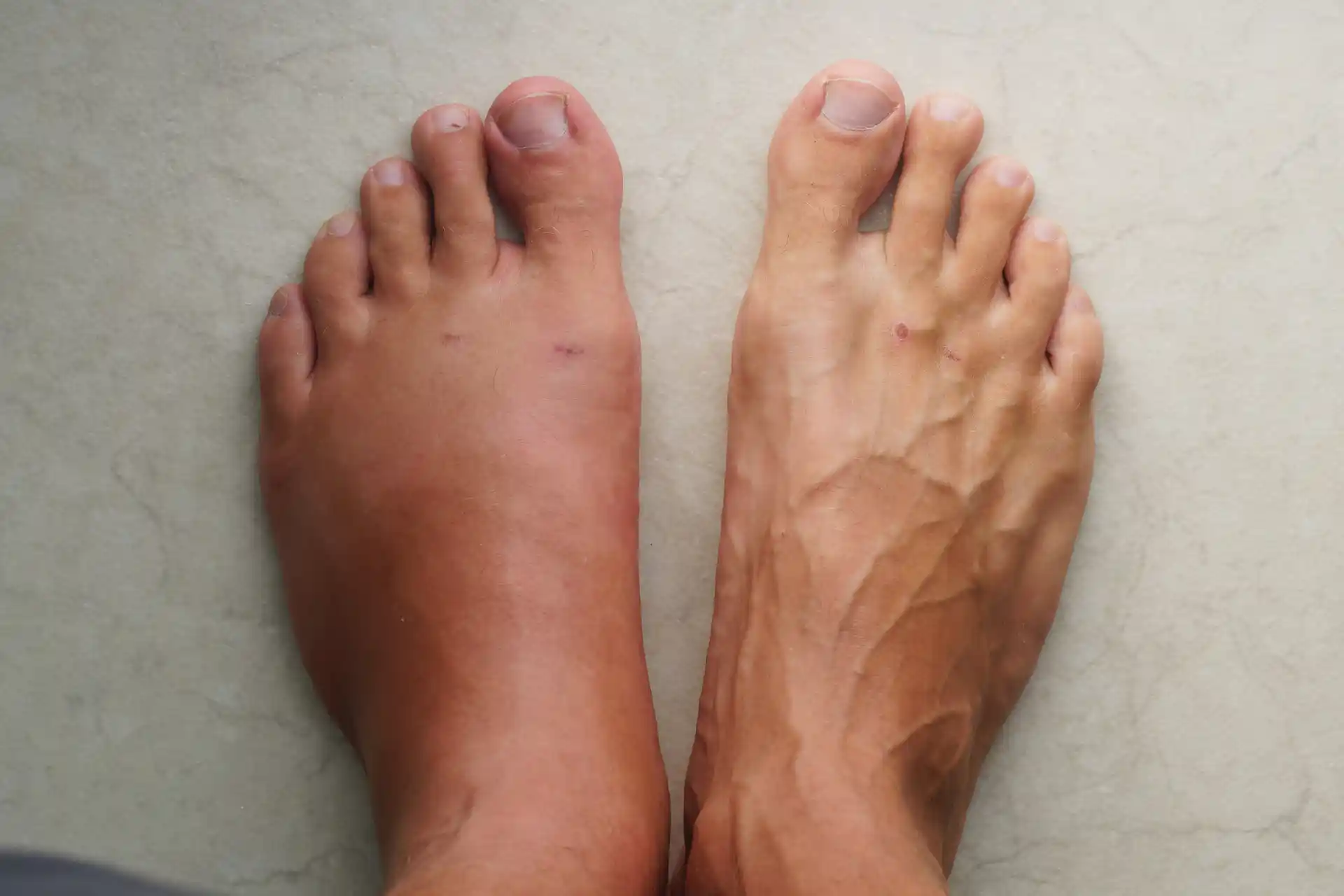Understanding Achilles Tendon Pain
If you're experiencing pain in your Achilles tendon while walking, it's important to understand the causes of this discomfort and how it can impact your ability to walk comfortably.
Causes of Achilles Tendon Pain
Achilles tendon pain when walking can be attributed to several factors. The most common cause is Achilles tendinitis, which occurs when the Achilles tendon becomes inflamed due to overuse or repetitive stress. This condition often affects athletes or individuals who engage in activities that involve repetitive jumping or running motions.
Other possible causes of Achilles tendon pain include:
- Achilles tendon rupture - A partial or complete tear of the Achilles tendon.
- Achilles tendonosis - Degeneration of the Achilles tendon due to chronic overuse.
- Bursitis - Inflammation of the fluid-filled sacs (bursae) around the Achilles tendon.
- Haglund's deformity - A bony enlargement at the back of the heel that irritates the Achilles tendon.
Identifying the specific cause of your Achilles tendon pain is essential for effective treatment. If you're unsure about the cause, it's recommended to consult a medical professional for a proper diagnosis. For more information on Achilles tendonitis and its symptoms, you can refer to our article on Achilles tendinitis symptoms.
Impact of Achilles Tendon Pain on Walking
Achilles tendon pain can significantly impact your ability to walk comfortably and perform your daily activities. The pain may be felt as a dull ache or sharp, stabbing sensation along the back of the lower leg or heel. Walking or engaging in activities that involve the use of the affected leg may exacerbate the pain.
Individuals with Achilles tendon pain often experience difficulties with:
- Pushing off the ground while walking or running.
- Climbing stairs or inclines.
- Engaging in sports or physical activities that require repetitive foot movements.
- Standing or walking for extended periods.
It's crucial to address Achilles tendon pain promptly to prevent further complications and restore your ability to walk pain-free. In the following sections, we will explore various management techniques and tips to help alleviate Achilles tendon pain and improve your walking experience.
For information on different treatment options for severe Achilles tendon pain, refer to our article on Achilles tendinitis therapies.
Managing Achilles Tendon Pain
If you're experiencing Achilles tendon pain while walking, there are several strategies you can utilize to manage and alleviate your discomfort. The following methods can help you find relief and promote the healing process.
Rest and Ice Therapy
One of the first steps in managing Achilles tendon pain is to provide rest to the affected area. Avoid activities that exacerbate the pain and put strain on the tendon. This may mean taking a break from high-impact exercises or reducing the duration and intensity of your walks. By allowing your Achilles tendon to rest, you can prevent further irritation and promote healing.
In addition to rest, applying ice to the affected area can help reduce pain and inflammation. Ice therapy, also known as cryotherapy, can be performed by placing an ice pack or a bag of frozen vegetables wrapped in a thin cloth on the painful area for 15 to 20 minutes at a time. This can be repeated several times a day, especially after physical activity. Remember to always wrap the ice pack to protect your skin from direct contact with the cold.
Stretching and Strengthening Exercises
Stretching and strengthening exercises can play a crucial role in managing Achilles tendon pain. These exercises help improve the flexibility and strength of the calf muscles, which can alleviate stress on the Achilles tendon.
Calf stretches are particularly beneficial for relieving tension in the Achilles tendon. One effective stretch is the wall calf stretch. Stand facing a wall with one foot forward and the other foot slightly back. Lean forward, keeping your back leg straight and your heel on the ground. You should feel a stretch in your calf. Hold the stretch for 30 seconds and repeat on both legs.
Strengthening exercises, such as heel raises, can also help improve the condition of the Achilles tendon. Stand on the edge of a step or a sturdy platform, with your heels hanging off the edge. Slowly raise your heels as high as you can, then lower them back down. Repeat this exercise for about 10 to 15 repetitions.
Remember to always listen to your body and stop any exercise if it causes pain or discomfort. If you're unsure about the appropriate exercises for your condition, it's advisable to consult a healthcare professional or physical therapist. They can provide personalized guidance and recommend specific exercises tailored to your needs.
Tips for Walking with Achilles Tendon Pain
If you're experiencing Achilles tendon pain while walking, there are several strategies you can employ to manage the discomfort and continue with your daily activities. Here are two important tips to keep in mind:
Proper Footwear and Orthotics
Choosing the right footwear is essential when dealing with Achilles tendon pain. Look for shoes that provide adequate support and cushioning to reduce strain on the tendon. Here are some key features to consider:
- Arch Support: Opt for shoes with proper arch support to help distribute the pressure evenly along the foot and reduce stress on the Achilles tendon.
- Heel Counter: A firm heel counter (the back part of the shoe that surrounds the heel) can help stabilize the foot and provide additional support to the Achilles tendon.
- Cushioning: Shoes with good cushioning can absorb shock and reduce impact on the tendon while walking. Consider using gel inserts or heel cups for added comfort.
In some cases, your healthcare provider may recommend orthotic inserts to provide additional support and alignment for your feet. These custom-made or over-the-counter inserts can help alleviate pressure on the Achilles tendon and promote proper foot mechanics. It's important to consult with a healthcare professional to determine the most suitable footwear and orthotic options for your specific needs.
Gradual Increase in Activity Level
When dealing with Achilles tendon pain, it's crucial to avoid sudden increases in activity level that may exacerbate the discomfort. Instead, focus on gradually increasing your activity level over time. Here are some suggestions to help you safely progress:
- Warm-Up and Stretching: Begin each walking session with a gentle warm-up, such as a few minutes of brisk walking or cycling, followed by targeted stretching exercises for the calf muscles. This can help improve flexibility and reduce strain on the Achilles tendon.
- Pace Yourself: Start with shorter walks and gradually increase the duration and intensity as tolerated. Listen to your body and pay attention to any signs of pain or discomfort. If pain persists, consider reducing the duration or intensity of your walks until you feel more comfortable.
- Rest and Recovery: Allow your body ample time to rest and recover between walking sessions. This can help prevent overuse and provide an opportunity for the Achilles tendon to heal.
Remember to consult with your healthcare provider or a physical therapist for personalized advice and guidance on managing Achilles tendon pain while walking. They can provide specific exercises, treatment options, and additional strategies to support your recovery.
By following these tips and taking appropriate measures to protect and support your Achilles tendon, you can continue walking while minimizing discomfort and promoting healing. For more information on Achilles tendon pain and its treatment, visit our article on how to cure Achilles tendonitis fast.
Seeking Professional Help
When you are experiencing Achilles tendon pain while walking, it is important to know when to seek professional help. Consulting a doctor or physical therapist can provide you with expert guidance and specialized treatment options to address your condition effectively.
When to Consult a Doctor or Physical Therapist
If you are experiencing persistent or severe Achilles tendon pain that is affecting your daily activities, it is advisable to consult a healthcare professional. Here are some signs that indicate it's time to seek professional help:
- Severe pain that does not improve with rest, ice, and self-care measures.
- Inability to bear weight on the affected leg or difficulty walking.
- Swelling, redness, or warmth around the Achilles tendon.
- Popping or snapping sound at the time of injury.
- Limited range of motion in the ankle or difficulty flexing the foot.
A doctor or physical therapist will assess your condition, perform a thorough examination, and may order diagnostic tests such as an MRI or ultrasound to evaluate the extent of the injury. Based on the findings, they will recommend an appropriate treatment plan tailored to your specific needs.
Treatment Options for Severe Achilles Tendon Pain
In cases of severe Achilles tendon pain, various treatment options may be considered by healthcare professionals. These options may include:
- Physical therapy: A physical therapist can guide you through exercises and stretches that help strengthen the Achilles tendon and surrounding muscles. They may also utilize techniques like ultrasound therapy or electrical stimulation to promote healing and reduce pain.
- Orthotic devices: Depending on the underlying cause and biomechanical factors contributing to your Achilles tendon pain, a doctor or physical therapist may recommend orthotic devices such as heel lifts or customized shoe inserts to provide support and alleviate stress on the tendon.
- Medication: In some cases, nonsteroidal anti-inflammatory drugs (NSAIDs) may be prescribed to help reduce pain and inflammation associated with Achilles tendonitis. However, it's important to consult with a healthcare professional before taking any medication.
- Immobilization: Severe cases of Achilles tendon pain may require immobilization to allow the tendon to heal. This can be achieved through the use of a walking boot, cast, or brace, which restricts movement and relieves stress on the tendon.
- Surgery: In rare cases where conservative treatments do not provide relief or in the presence of a severe Achilles tendon rupture, surgical intervention may be necessary. Surgery can involve repairing the tendon or removing damaged tissue.
Remember, the treatment approach for Achilles tendon pain may vary depending on the severity of your condition and individual factors. Consulting a healthcare professional will ensure that you receive the proper diagnosis and appropriate treatment for your specific situation. For more information on preventing Achilles tendon tears, check out our article on how to prevent Achilles tear.
If you’re seeking RELIEF® for yourself or a loved one dealing with chronic Achilles tendon pain, contact us to learn more.



.jpg)


.svg)